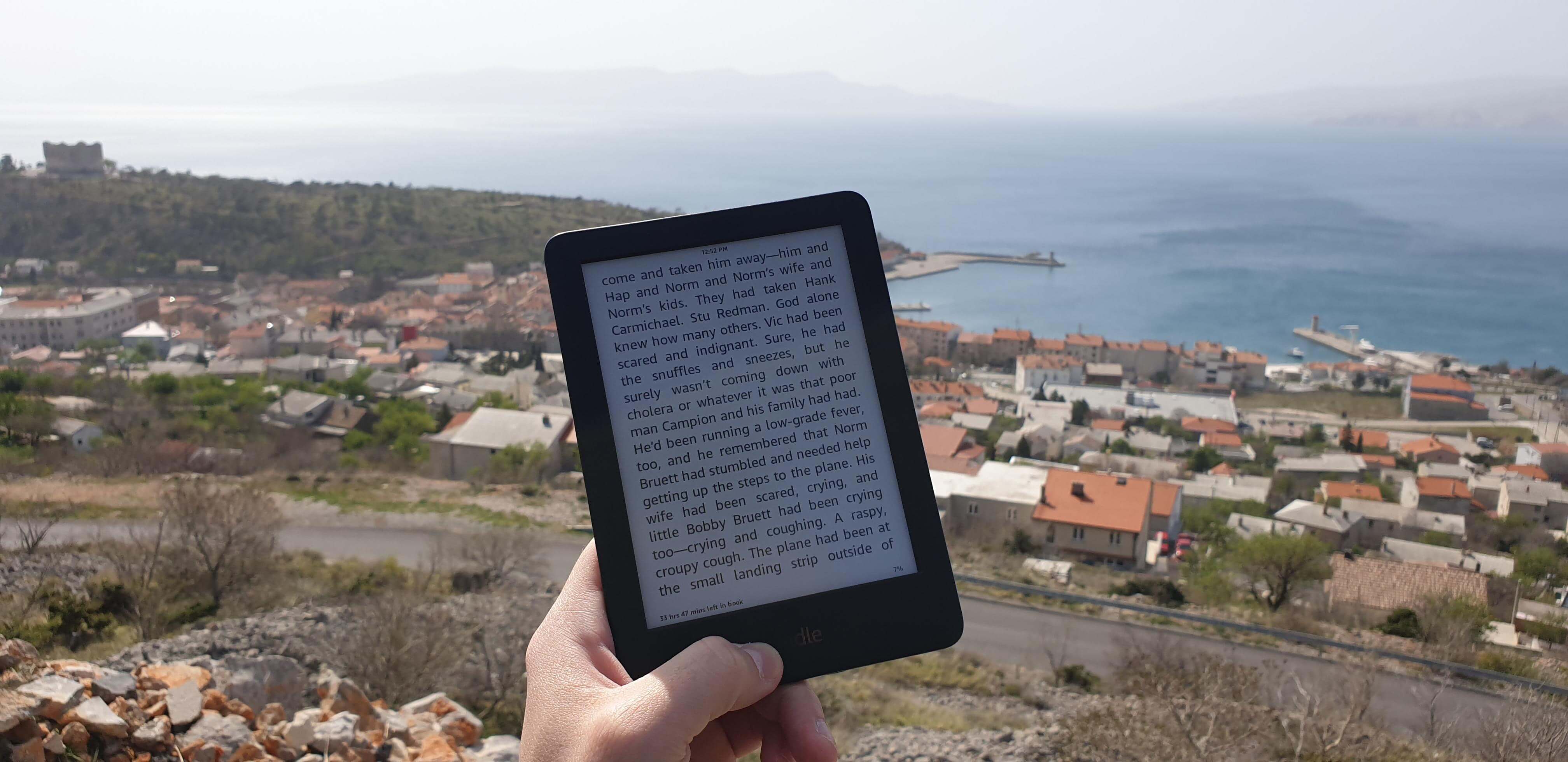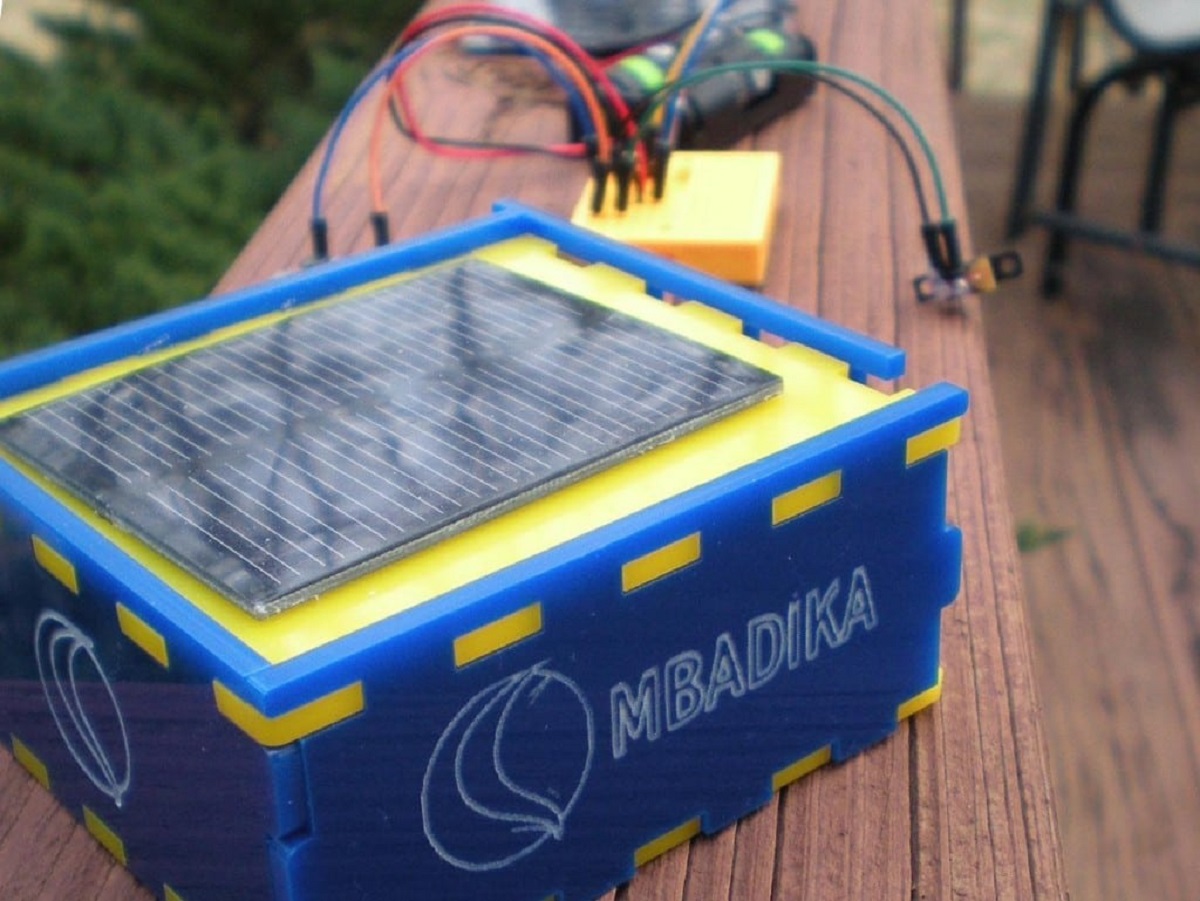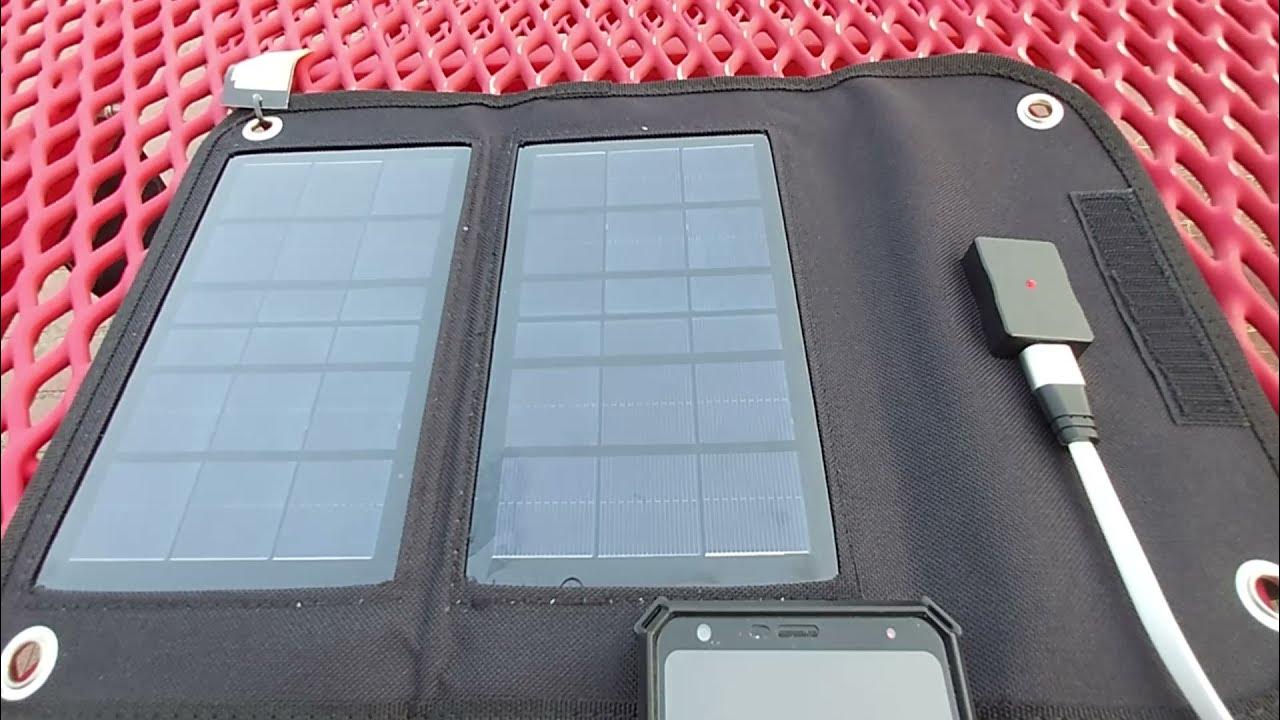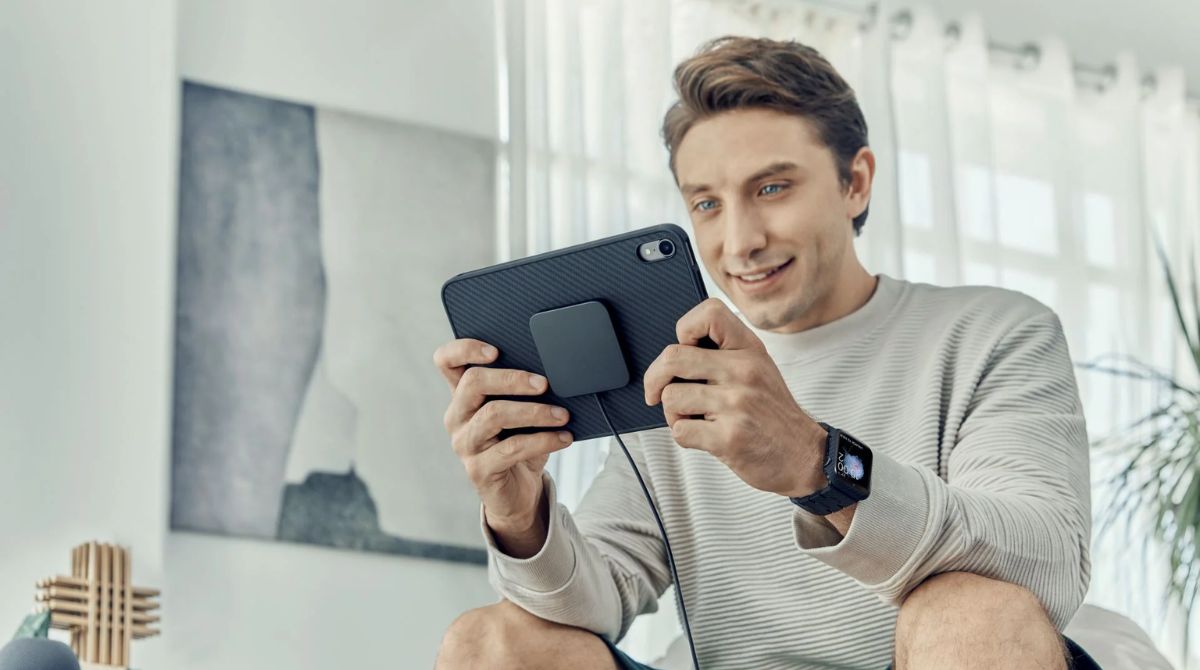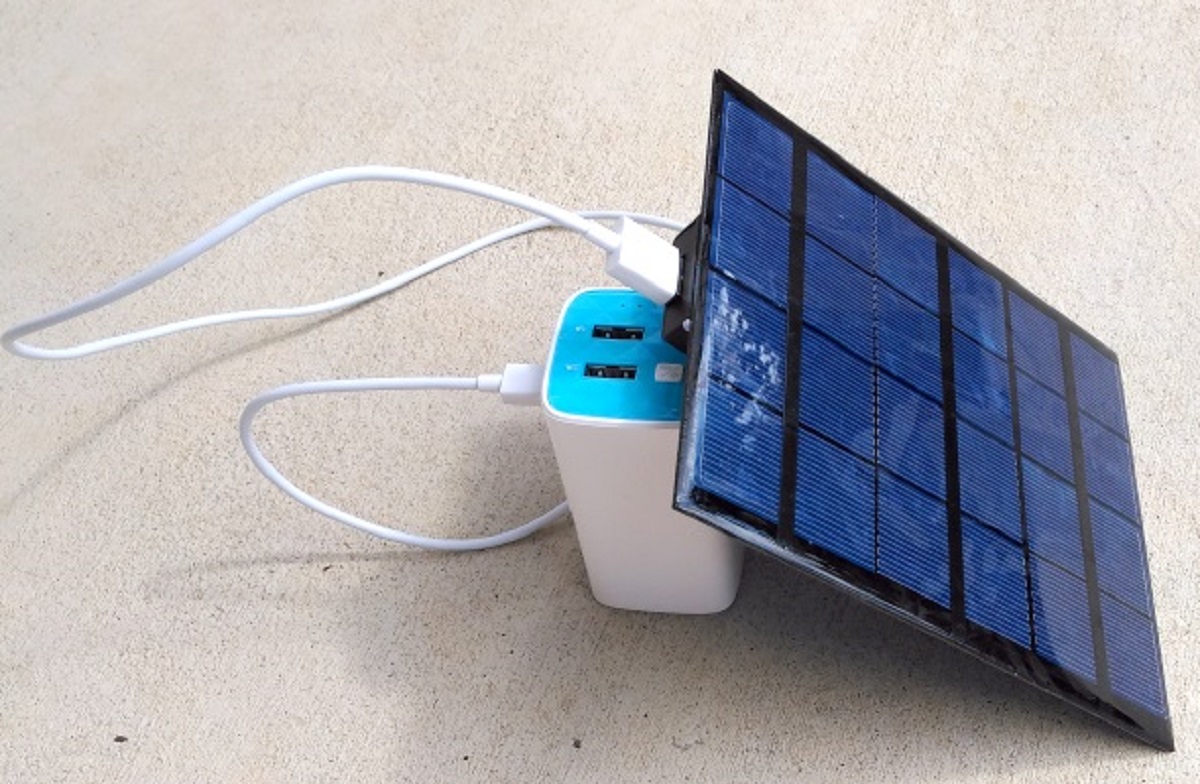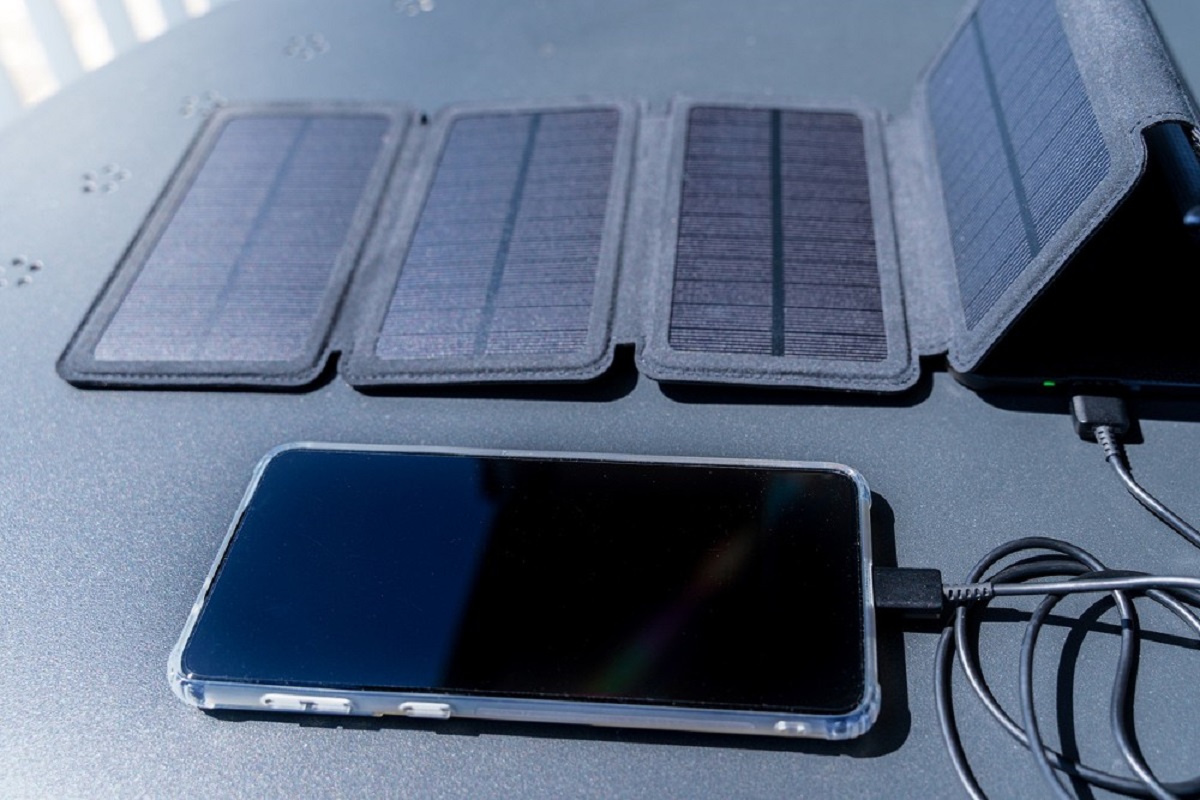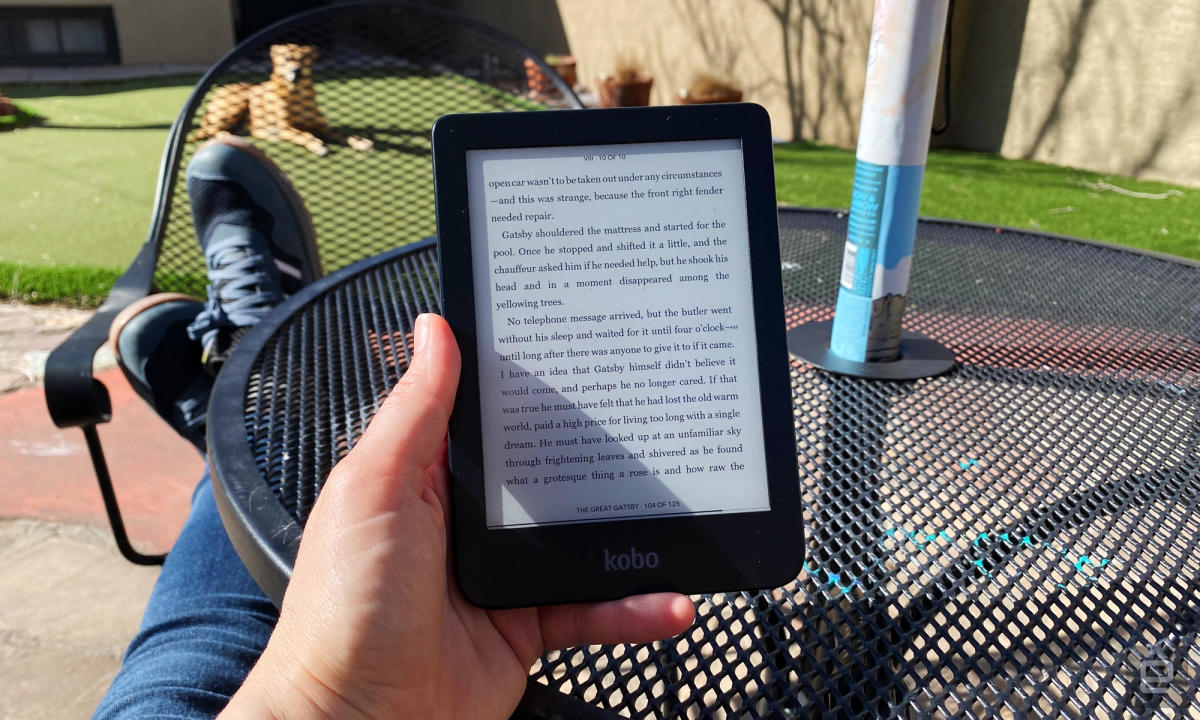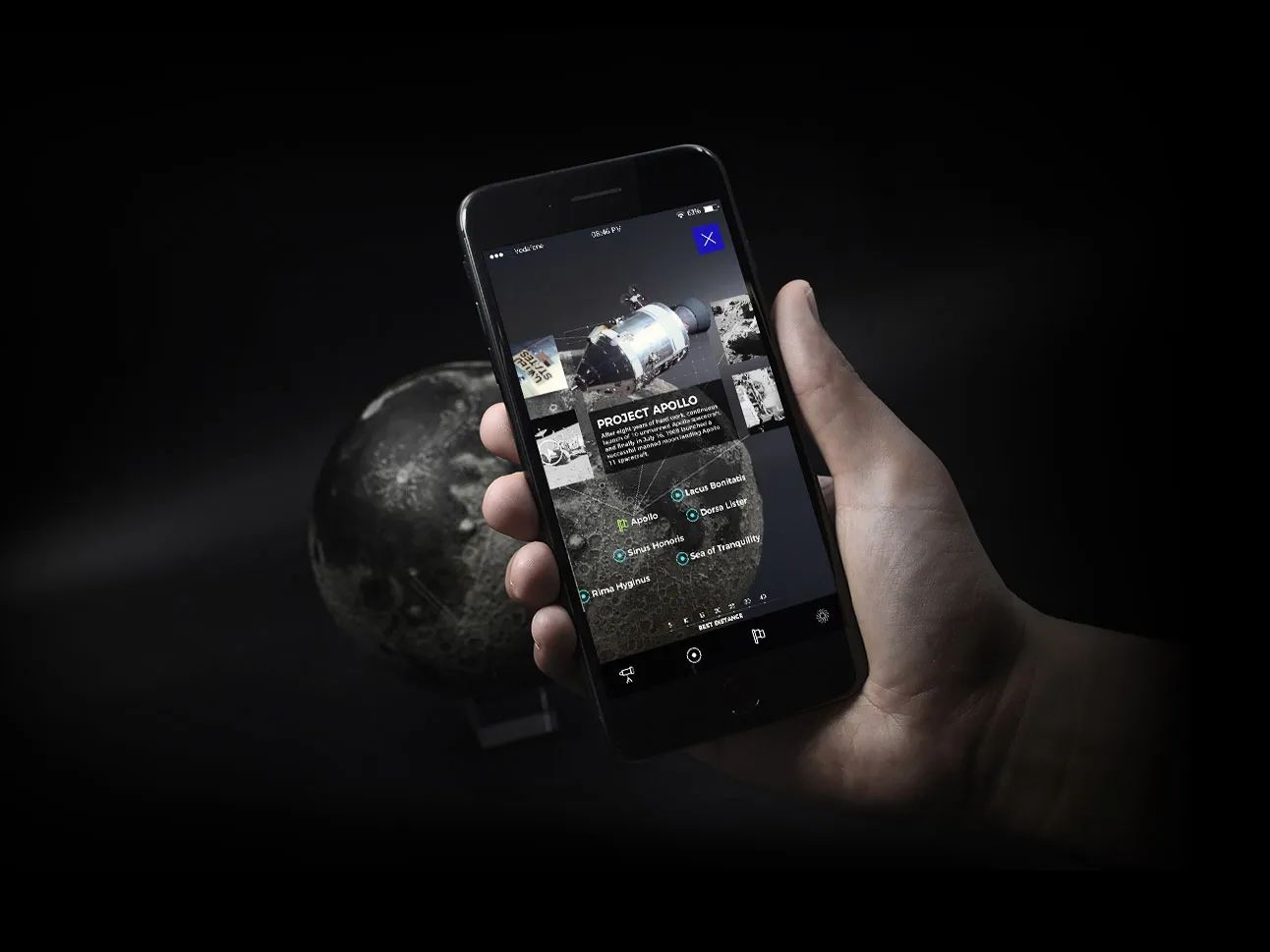Introduction
Reading a tablet in the sun can be a challenging task, especially when the glare makes it difficult to see the screen. Whether you’re relaxing by the pool or enjoying a day at the beach, being able to read your favorite books, browse the internet, or catch up on work on your tablet is essential. Fortunately, there are several techniques and tools you can use to enhance the readability of your tablet screen and enjoy your device even under bright sunlight.
In this article, we will explore various tips and tricks that can help you read a tablet in the sun more comfortably. From adjusting brightness settings to using sun shades and anti-glare screen protectors, we will cover a range of strategies to optimize your tablet viewing experience. Whether you’re using a tablet with an LCD screen or an e-ink display, these techniques can help minimize glare and improve visibility, so you can read your tablet without straining your eyes or missing important information.
While some of these strategies may require an additional investment or slight adjustments to your tablet habits, they can significantly enhance your outdoor reading experience. By implementing these tips, you can make the most out of your tablet and enjoy using it even in the brightest sunlight.
So, if you’ve been struggling to read your tablet under the sun, look no further. Let’s dive into the various methods you can employ to read a tablet with ease and clarity, even when the sun is shining bright.
Adjust Brightness Settings
One of the first steps you can take to improve your tablet’s readability in the sun is to adjust its brightness settings. Most tablets offer the option to manually control the screen brightness, allowing you to increase it for better visibility under bright sunlight.
To adjust the brightness settings on your tablet, go to the device’s settings menu and look for the “Display” or “Brightness” option. From there, you can either slide the brightness bar to increase or decrease the screen brightness or toggle the automatic brightness feature off and manually adjust the brightness level.
When reading in the sun, it’s recommended to set the screen brightness to the highest level possible without causing discomfort to your eyes. By increasing the brightness, the screen becomes more visible and less affected by the external glare. However, keep in mind that higher brightness settings may consume more battery power, so it’s advisable to have your tablet fully charged or connected to a power source.
Additionally, some tablets have ambient light sensors that automatically adjust the screen brightness based on the surrounding lighting conditions. While this feature can be convenient, it may not always work optimally in bright sunlight. By manually overriding the automatic brightness and setting it at a higher level, you can ensure better readability in sunny environments.
Remember to readjust the brightness settings once you move back to indoor or low-light environments to prevent eye strain. Finding the right balance between screen brightness and your comfort level is crucial for an enjoyable reading experience both indoors and outdoors.
Use a Sun Shade
Using a sun shade is another effective way to improve the readability of your tablet screen when you’re outside in the sun. A sun shade is a physical cover that blocks direct sunlight from hitting the screen, reducing glare and enhancing visibility.
Sun shades come in various forms, ranging from portable attachments to full covers specifically designed for tablets. These shades can attach to your tablet or be held above it, providing shade and preventing the sunlight from directly hitting the screen.
Some sun shades are adjustable, allowing you to position them at different angles to block out the sun’s rays effectively. Look for sun shades that are made from anti-glare materials or have a matte finish, as these can further minimize the reflection of sunlight on the screen.
If you don’t have access to a dedicated sun shade, you can get creative and use everyday items as makeshift shades. For example, holding an unfolded newspaper or wearing a wide-brimmed hat can act as a temporary shade to improve visibility.
Keep in mind that using a sun shade may limit your range of motion or require you to hold the shade above the tablet, which can be inconvenient for extended periods. However, the benefit of reduced glare and improved visibility outweighs the minor inconvenience for many readers.
By using a sun shade, you can create a shaded area around your tablet, reducing the glare and improving the readability of the screen. It’s a simple and cost-effective solution that can significantly enhance your outdoor reading experience.
Look for Anti-Glare Screen Protectors
If you want to improve the readability of your tablet screen in the sun without compromising convenience or mobility, consider investing in an anti-glare screen protector. These thin films or overlays are designed to reduce the amount of reflected light on the screen, minimizing glare and improving visibility.
An anti-glare screen protector is typically made of a matte material that diffuses light and reduces the intensity of reflections. By applying this protective layer over your tablet’s screen, you can significantly reduce the impact of direct sunlight, making it easier to read and view content.
When purchasing an anti-glare screen protector, it’s essential to ensure that it is compatible with your specific tablet model and sized correctly. Most screen protectors come with instructions on how to apply them correctly, and some even include additional cleaning and installation tools to help you achieve a bubble-free application.
Anti-glare screen protectors not only improve readability in bright sunlight but also offer other benefits. They can help protect your screen from scratches, smudges, and fingerprints, keeping it clean and clear. Additionally, these protectors can minimize the strain on your eyes, especially during extended reading sessions under various lighting conditions.
Keep in mind that while anti-glare screen protectors can significantly reduce glare, they may also slightly impact the overall clarity and sharpness of the display. However, the trade-off is often worth it for the improved visibility, especially when reading outdoors.
If you’re an avid reader who frequently uses the tablet in bright environments, investing in a high-quality anti-glare screen protector is a wise choice. Not only will it enhance your tablet’s readability in the sun, but it will also provide additional protection for your device.
Find a Shaded Area
Finding a shaded area is a simple yet effective solution for improving the readability of your tablet screen under the sun. By positioning yourself in a location where the sunlight is blocked or diffused, you can enjoy better visibility and reduce the glare on your tablet’s display.
Look for natural sources of shade, such as trees, umbrellas, or nearby structures that can provide cover from direct sunlight. These shaded areas can create a more controlled lighting environment, making it easier to read your tablet without straining your eyes.
When choosing a shaded area, consider the positioning of your tablet to ensure that the screen is not directly exposed to any remaining sunlight. Adjust your seating or position yourself in a way that maximizes the shade coverage over your tablet. This may involve tilting or adjusting the angle of your tablet or using a portable stand to position it optimally.
Keep in mind that the positioning of the shade may change as the sun moves throughout the day. Be prepared to adjust your seating or the location of your reading spot to maintain optimal shade coverage.
Finding a shaded area not only helps improve the readability of your tablet screen but also provides additional comfort and protection from the sun’s rays. It allows you to enjoy your tablet without struggling to see the display or dealing with excessive glare.
So, before settling down to read or use your tablet outdoors, take a moment to scout for a suitable shaded area. It can make a world of difference in your overall reading experience under the sun.
Tilt the Tablet Screen
Tilting the tablet screen is a simple yet effective technique to mitigate glare and improve the readability of your device when using it in the sun. By adjusting the angle of the screen, you can minimize reflections and enhance visibility.
Experiment with different tilt angles to find the position that works best for you. Tilting the tablet slightly downward can help reduce the amount of incoming light that reflects off the screen, making it easier to read the content without the interference of glare.
However, be cautious not to tilt the screen too much, as it might affect your comfort and strain your neck over extended periods. Find a balance that provides optimal visibility while maintaining a comfortable viewing angle.
Keep in mind that the optimal tilt angle might vary depending on the specific lighting conditions and the position of the sun. As the sun moves, you may need to readjust the tilt or position of your tablet to maintain the best visibility.
If you’re using a tablet stand or case, you may have more flexibility in adjusting the angle. Look for stands or cases that offer adjustable tilt options, allowing you to find the perfect positioning for reading in different lighting environments.
Tilting the tablet screen is a cost-effective and easy-to-implement method to improve the readability of your device in the sun. By experimenting with different angles, you can find the position that minimizes glare and maximizes your reading comfort.
Use a Tablet with an E-Ink Screen
If you find it challenging to read a tablet in the sun due to glare and reflection, consider using a tablet with an E-Ink screen. E-Ink technology is specifically designed to mimic the appearance of ink on paper, making it easier to read in various lighting conditions, including direct sunlight.
E-Ink screens, commonly found in e-readers, offer several advantages over traditional LCD or OLED screens. One of the key benefits is their excellent outdoor visibility. E-Ink screens have a matte finish that reduces glare and minimizes reflections, allowing for comfortable reading even in bright sunlight.
These screens use minimal power, which means that they can hold their display without draining the battery quickly. This makes E-Ink tablets perfect for extended outdoor reading sessions without having to worry about running out of power.
However, it is worth noting that E-Ink screens typically have slower refresh rates and limited color capabilities compared to LCD or OLED screens. Therefore, if your tablet usage goes beyond reading, such as browsing the web, streaming videos, or playing graphic-intensive games, an E-Ink screen may not be the ideal choice.
If reading is your primary concern, investing in a tablet with an E-Ink screen can significantly enhance your reading experience in sunny environments. The paper-like display and reduced glare make it easier on the eyes and allow you to enjoy your favorite books, articles, and documents with clarity, even under direct sunlight.
When considering a tablet with an E-Ink screen, research the available options and read reviews to find a device that suits your needs and preferences. Some popular E-Ink tablet brands include Kindle, Nook, and Kobo, each with their own unique features and functionalities.
By opting for a tablet with an E-Ink screen, you can enjoy a more comfortable reading experience outdoors, without the hassle of battling glare or reflections on a traditional LCD or OLED screen.
Invest in a Device with High Brightness Output
If you frequently use your tablet in bright outdoor environments, consider investing in a device with a high brightness output. Tablets with brighter screens can handle direct sunlight better and provide improved visibility under challenging lighting conditions.
When comparing tablets, look for models that advertise a high nits (cd/m²) rating. Nits refer to the unit of measurement used to quantify screen brightness. The higher the nits, the brighter the screen.
Typically, tablets with a brightness level of 500 nits or higher are better suited for outdoor use. These devices offer increased luminosity, allowing you to better view the screen content even in direct sunlight.
However, keep in mind that tablets with higher brightness levels might consume more battery power. It’s vital to assess your usage patterns and ensure that the device’s battery life can accommodate your needs, especially if you plan on using it for extended periods without access to a power source.
Additionally, some tablets come equipped with adaptive brightness technology. This feature adjusts the screen brightness automatically based on the surrounding lighting conditions. Tablets with this functionality can be convenient as they optimize the brightness according to the ambient light, ensuring maximum visibility while conserving battery life.
Before making a purchase, compare the specifications and reviews of different tablets to find a device with a high brightness output that meets your requirements. Pay attention to how well the tablet performs in bright sunlight and read user experiences to determine if the brightness levels are sufficient for outdoor usage.
Investing in a device with a high brightness output can make a significant difference in your ability to read and use your tablet in bright outdoor environments. With a brighter screen, you’ll experience reduced glare and improved visibility, allowing you to enjoy your tablet without straining your eyes.
Wear Polarized Sunglasses
Another effective way to read a tablet in the sun is to wear polarized sunglasses. Polarized lenses help reduce glare by filtering out horizontally polarized light, which is often the primary cause of glare on electronic screens.
When choosing sunglasses for reading your tablet, opt for those that specifically mention polarization. These sunglasses are designed to block glare from various sources, including the sun’s reflection on water, snow, and electronic screens.
By wearing polarized sunglasses, you can significantly reduce the amount of reflected light that reaches your eyes, enhancing both comfort and visibility when using a tablet outdoors.
Keep in mind that not all sunglasses are polarized, so it’s important to check the product description or consult with an optician to ensure you’re purchasing the right kind. Polarized sunglasses are widely available, and you can find them in various styles to suit your personal preference.
While polarized sunglasses can effectively reduce glare, they may also affect the appearance of certain screens, especially those with LCD displays. Some LCD screens contain a polarizing filter that may interfere with the effectiveness of polarized lenses, causing the screen to appear darker or colored when viewed at certain angles.
To mitigate this potential issue, try tilting your head or adjusting the angle at which you view the screen. By doing so, you may find a position where the polarization of your sunglasses and the screen align, resulting in reduced glare and clear visibility.
Wearing polarized sunglasses when using your tablet in the sun not only improves readability but also provides protection for your eyes against harmful UV rays. It’s a practical and convenient solution that allows you to comfortably enjoy your tablet in bright outdoor environments.
Optimize the Positioning
Optimizing the positioning of your tablet is crucial for maximizing visibility and reducing glare when reading in the sun. By considering factors such as your body posture, the angle of the tablet, and the direction of the sunlight, you can create an optimal setup that allows for comfortable and clear viewing.
Firstly, consider your body posture. Sit or stand in a way that minimizes the strain on your neck and eyes. Maintaining an upright posture with your tablet at eye level can help reduce glare and prevent discomfort during extended reading sessions.
Next, adjust the angle of your tablet to prevent direct sunlight from hitting the screen. Tilting the tablet slightly downwards or finding a position where the sunlight is not directly facing the screen can significantly enhance visibility. Experiment with different angles until you find the optimal position that minimizes glare.
Additionally, pay attention to the direction of the sunlight. Position yourself and your tablet in such a way that the sunlight is behind you or at an angle that minimizes reflections. By avoiding direct sunlight or reflections on the screen, you can read your tablet more comfortably without straining your eyes.
If necessary, use your hand or a makeshift shade to block the rays of the sun from hitting the screen. This can further reduce glare and improve visibility, especially if you’re unable to find a shaded area or make use of other tools like sun shades.
Lastly, consider the overall lighting conditions of your environment. Even in the shade, variations in lighting can affect screen readability. If possible, position yourself in a spot with consistent lighting or adjust the brightness and contrast settings on your tablet to adapt to different lighting conditions.
By intentionally optimizing the positioning of your tablet and adapting your body posture to reduce glare, you can significantly improve your overall reading experience in the sun. Taking these simple steps ensures that you can enjoy clarity and comfort while using your tablet outdoors.
Experiment with Different Viewing Angles
When it comes to reading a tablet in the sun, experimenting with different viewing angles can help you find the sweet spot that offers maximum visibility and minimizes glare. Not all screens or lighting conditions are the same, so adjusting the angle at which you view your tablet can make a significant difference in your reading experience.
Start by tilting your tablet slightly up or down and observe how the screen reacts to the sunlight. A small adjustment in angle can change the way light reflects off the screen, reducing glare and improving readability.
Try different viewing angles by gradually tilting the tablet left or right. Depending on the position of the sun, you may find that a slight tilt to the left or right helps reduce glare and improves visibility in certain lighting situations.
As you experiment with different angles, be mindful of your comfort level. Ensure that the tablet is positioned in a way that allows you to maintain good posture and avoid straining your neck or eyes. Consider using a tablet stand or propping it up against a surface to achieve a comfortable viewing angle.
Keep in mind that the optimal viewing angle may vary based on factors such as the time of day, the direction of the sun, and the specific lighting conditions. What works well in the morning may not be as effective in the afternoon. Be open to adjusting the angle accordingly to account for these variables.
Take the time to test different viewing angles in various outdoor settings. By doing so, you’ll be able to identify the angles that provide the best visibility and least amount of glare. This experimentation process may take some trial and error, but it will be worth it to achieve an optimal and enjoyable reading experience.
Remember, every individual’s preferences and lighting conditions may differ, so what works for one person may not work for another. Take the time to find the viewing angles that work best for you and your specific tablet.
By experimenting with different viewing angles, you can discover the positions that offer the best combination of clarity, comfort, and reduced glare, allowing you to read your tablet with ease even under the sun’s bright rays.
Conclusion
Reading a tablet in the sun can be a challenge due to glare and reflection, but with the right techniques, you can enhance the visibility and enjoy your device even under bright sunlight. By adjusting brightness settings, using sun shades, and applying anti-glare screen protectors, you can minimize the impact of direct sunlight on your tablet’s screen.
Finding a shaded area or tilting the tablet screen can further reduce glare and improve readability. Additionally, investing in a tablet with a high brightness output or an E-Ink screen can significantly enhance your outdoor reading experience.
Wearing polarized sunglasses and optimizing the positioning of your tablet are additional strategies that can help combat glare and improve visibility. Experimenting with different viewing angles allows you to find the optimal position that provides maximum clarity and minimizes the impact of glare.
Remember that everyone’s preferences and lighting conditions may differ, so it’s essential to find the techniques that work best for you and your specific tablet. By implementing these tips, you can make the most out of your tablet and enjoy reading outdoors without straining your eyes or missing out on valuable content.
So, the next time you want to read a tablet in the sun, use these techniques to optimize your viewing experience. With a little adjustment and the right tools, you can enjoy a clear and comfortable reading experience, even under the bright rays of the sun.







